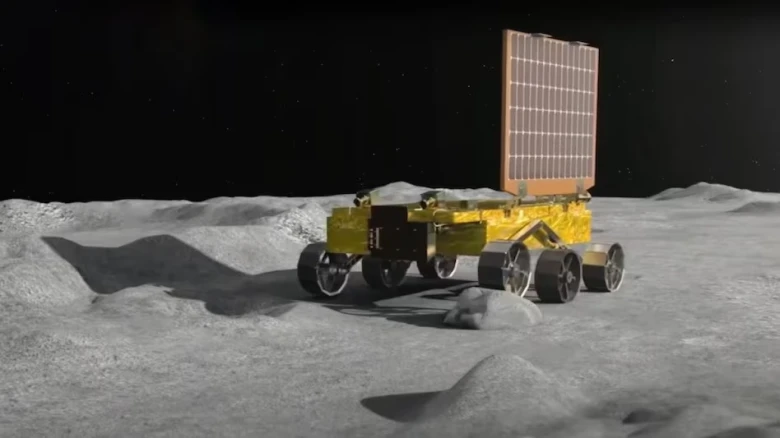Pragyan rover of the Chandrayaan-3 mission has unequivocally identified the presence of sulphur on the lunar surface near the...
Digital Desk: In a groundbreaking achievement, the Indian Space Research Organisation (ISRO) announced on Tuesday that the Pragyan rover of the Chandrayaan-3 mission has unequivocally identified the presence of sulphur on the lunar surface near the south pole. This revelation marks a significant milestone in lunar exploration, shedding light on the moon's geological composition and offering new insights into its history.
ISRO took to the social media platform X to share this momentous discovery, stating, "In-situ scientific experiments continue...Laser-Induced Breakdown Spectroscope (LIBS) instrument onboard the Rover unambiguously confirms the presence of Sulphur (S) in the lunar surface near the south pole, through first-ever in-situ measurements."
The sophisticated LIBS instrument utilizes an intense laser pulse to analyze the composition of minerals. The successful utilization of this scientific technique now adds sulphur to the list of elements detected on the moon, joining the ranks of aluminium, calcium, ferrous, chromium, titanium, manganese, silicon, and oxygen, all of which were detected by the Pragyan rover as anticipated.
The recent findings arrive on the heels of Chandrayaan-3's successful profiling of the temperature of the soil on the moon's south pole. ISRO shared a graph on X, depicting temperature variations at various depths beneath the lunar surface. This comprehensive data demonstrates a pattern of decreasing temperature as depth increases, providing new insights into the moon's thermal characteristics.
Powered by solar energy, the Pragyan rover and Vikram lander continue to execute a series of scientific experiments, with the mission expected to remain operational for an additional seven days. Since its deployment from the lander, Pragyan has traversed a distance of approximately eight meters, with ongoing plans to further explore the region surrounding the Shiva Shakti landing site.
Among the primary objectives of the Pragyan rover is the investigation of the chemical composition of lunar dust and gravel. This critical research not only contributes to our understanding of the moon's geology and atmosphere but also holds the potential to unveil valuable information about the broader history of our celestial neighbor.
ISRO's accomplishments with Chandrayaan-3 underscore India's growing prominence in space exploration and technological innovation. As the agency continues to make strides in unraveling the mysteries of the moon and beyond, the world eagerly anticipates further revelations that could reshape our understanding of the cosmos.

Leave A Comment